Learning how to speed up your website is really one of the hardest things you can do. Fast-loading website or pages are very important for the success of a website as it influences so many factors. Just one or two seconds in delay may reduce:
- Page views
- Search ranking
- Conversions
- User experience
- Customer satisfaction; and
- Profits.
Why Website Speed is Important?
You can think of website loading speed as a sliding scale, where the faster sites derive the most benefits, and each and every second can make a big difference.
For instance, pages that load within 2 sec have an average bounce rate of 6 percent, while pages with loading speed of 5 sec have the bounce rates of 38 percent.
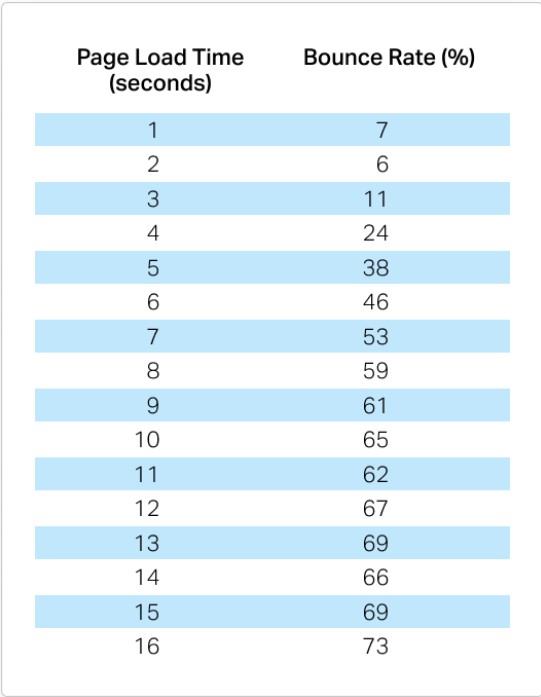
Even a 1 sec difference in page loading time can have a huge impact on performance.
If the page load time is 1 sec, then it makes visitor feel stress-free and in-control. But if it is 10 sec or more, their attention is barely kept, and they are unlikely to visit that webpage again.
According to an another study, Amazon would lose about 1.6 billion dollars every year if its website speed slowed down by just 1 second.
How Lack of Speed Kills Your Website
Now you have come to know why website speed is so important. Now let us know how low-site speed can kill your website:
1. Increases Bounce Rate:
A slow-loading website pushes people to leaving it. According to a Google Study, the slower your website speed, the more likely it is that website visitors will bounce; especially on mobile.
2. Reduces Conversions:
A slow-loading website can negatively affect the conversions. According to Portent, e-commerce sites can double their revenue (conversions) if their page loading time is from 1 to 2 seconds.
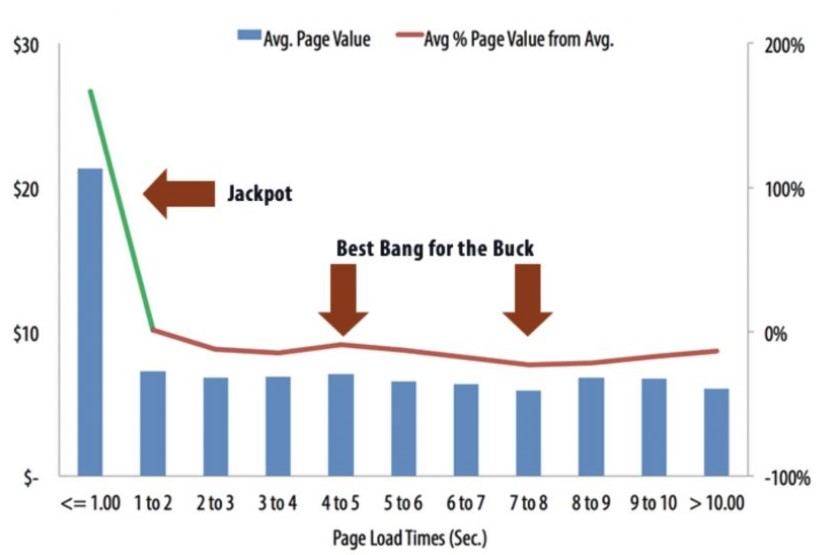
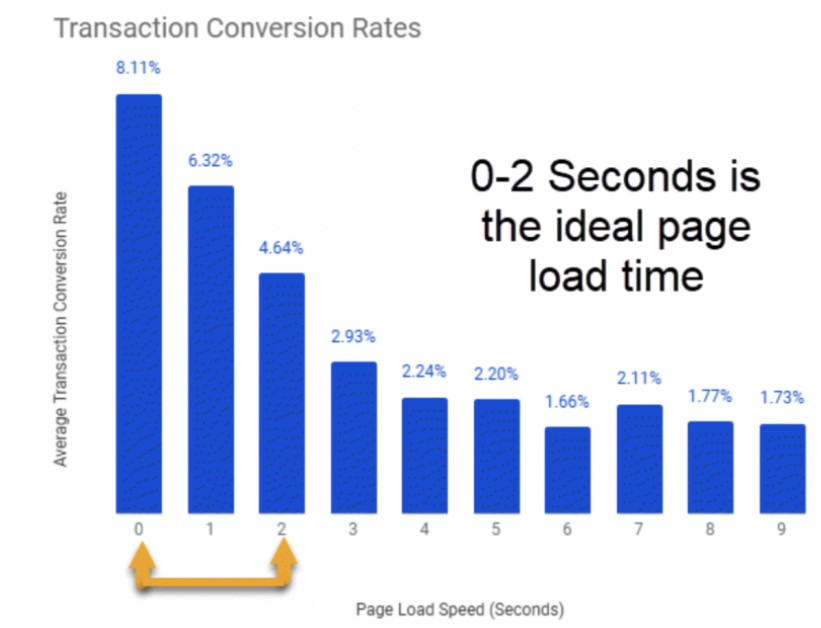
Similarly, Walmart learned that the faster their webpages, the more likely website visitors were to make a purchase:
- Every 1 sec improvement in site speed increased conversions by up to 2 percent.
- Every reduction in the loading time of a page by 100 milliseconds grew incremental conversions by up to 1 percent.
According to CXL, a loss of 25 percent was observed in conversions for a 1 second increase in the page loading time.
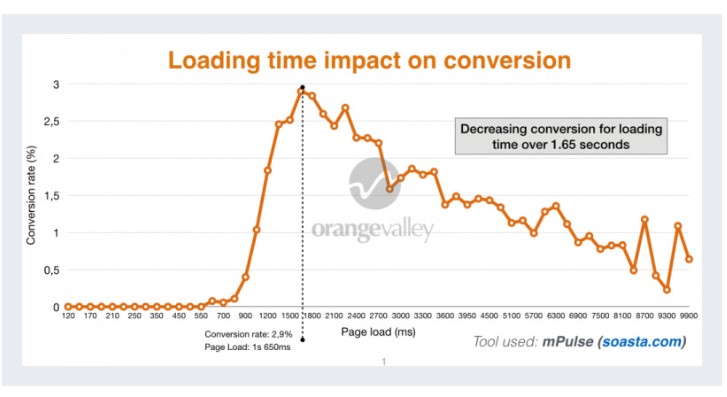
3. Bad User Experience:
If your website’ loading speed is slow, then it can lead to a bad user experience. If your website has a poor speed, that’s a red signal for your website, if it’s good, then it is a green signal.
In some cases, website-loading speed can even decide whether or not your site is usable for your audience.
So, if you want visitors stay on your site, rank well in search engines, increase conversions and keep your visitors happy, you need to give them a good user experience.
4. Less Organic Traffic:
Because visitors care about website speed, so Google also take care of it when ranking a website. Google already has announced that now website speed is a ranking factor.
Also, if your website loads slowly on mobile devices, it will decrease your search ranking as a whole, not just in mobile device searches. And, Google says itself that it affects the slowest websites, site speed also affects time on site, bounce rates and other markers search engines take into account.
In addition to this, a slow-loading page may negatively impact crawling. As a consequence, you may find fewer of your web pages indexed by Google.
How to Speed Up Your Website
Speeding up a webpage or a website is as important as finding the right hosting provider or domain name. Why? Just read the following statistics and you will definitely change your mind.
One second in page load time yields:
- 7% loss in conversions.
- 11% fewer page views.
- 16% decrease in customer satisfaction.
Amazon found this to be true. It reported an increased revenue of 1 percent for every 100 milliseconds improvement to its website speed based on their group reports.
According to Akamai,
- 47% of people expect a webpage to load in 2 sec or less.
- 40% will abandon a page if it takes more than 3 sec to load.
- 52% of online shoppers say quick page loads are very important for their loyalty to a website.
1. Run A Speed Test:
If you’re looking to boost the loading speed of your website, it’s always a good choice to start with a speed test. This will help you to know your current website speed and also highlights the issues your site might have.
There’re a number of tools available for website speed audit. One of my favorite tool is GTmetrix and the first step is to put your website URL and hit “Test Your Site” button to run the test.
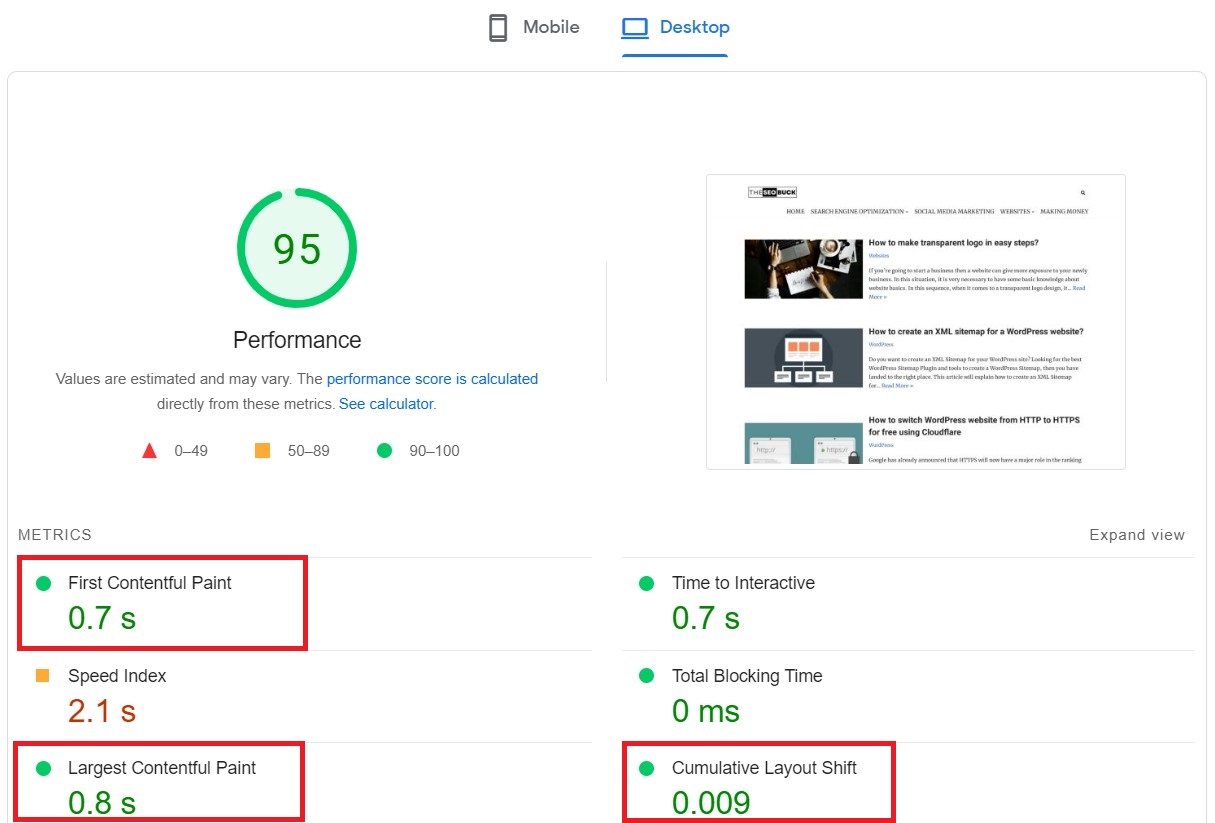
Once it’s done, you will get an overall speed score of your site. And, under Performance and Page Speed section, you can see suggestions to optimize your site for speed.
An another awesome page-speed audit tool is Page Speed Insights developed by Google. It is also one of my favorite tool.
For this, simply enter your website URL and just hit “ANALYZE” button available in the right.
And you can see, this website scores 86% on mobile devices. To either check your web page speed on desktop, simply click on “Desktop” option available in upper left corner.
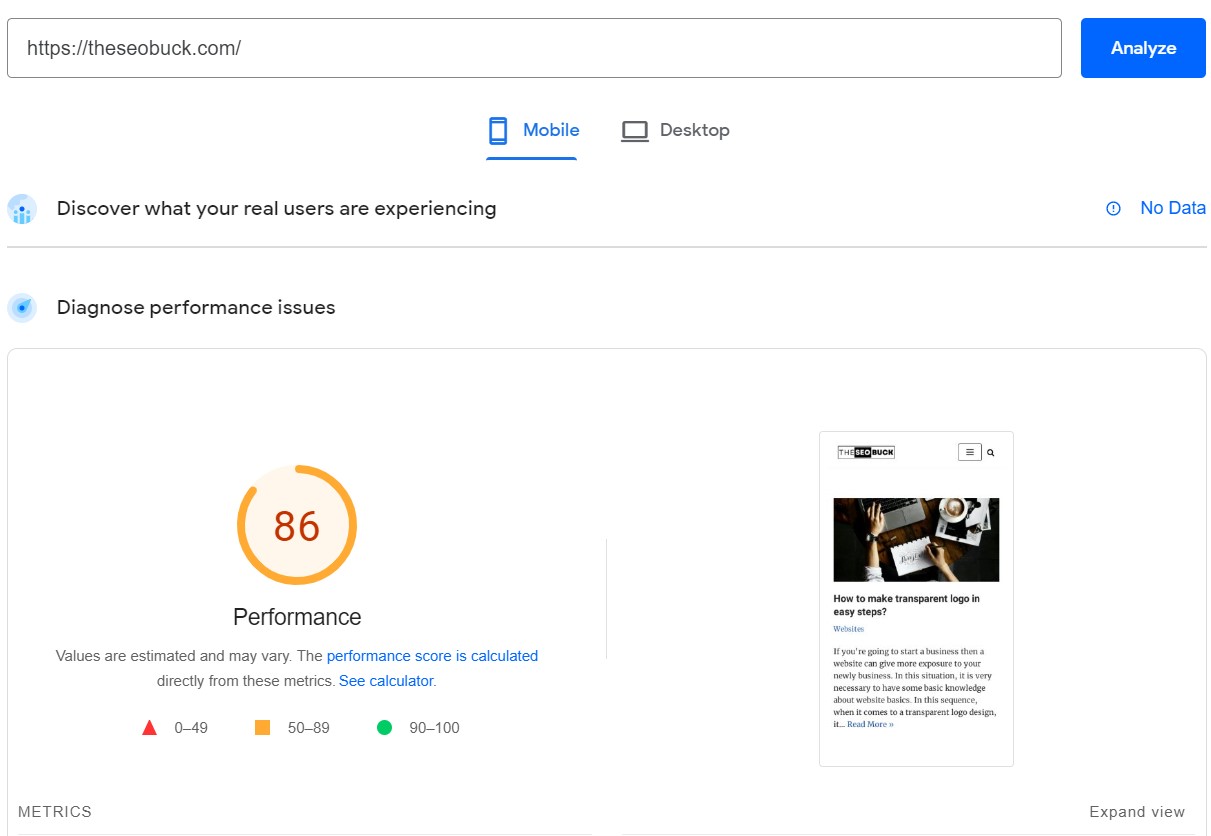
Here, it will give you some suggestions to optimize your website speed. By resolving these issues you can make your website even more fast.
Last but not least!
Some noted experts also suggest to use an online tool which is called as “Web Page Test“. It is primarily being developed and supported by Google. It performs website speed audit from multiple locations worldwide using real browsers (IE and Chrome) and at real consumer connection speeds.
To run the test, go to Web Page Test. Now follow these instructions:
- Test Location: It is the country of the user location.
- Browser: It is to simulate users’ browser.
- Click “Start Test”.
2. Optimize Images:
According to a study, on average, images make up about 21 percent of a total weightage of a webpage. So it is vital that they aren’t getting in the way of page-loading speed. Optimizing images is a process of finding the lowest image size with the most acceptable quality. But it’s not as complicated as it sounds.
Before you start making modification of the images, just make sure you’ve chosen the best file type. There are several types of files you can use; including:
- PNG or Portable Network Graphics produces higher quality images, but it is also true that they also has a larger file size.
- JPEG or Joint Photographic Experts Group uses lossy and lossless optimization. You can adjust the quality level for a good balance of file size and quality.
- GIF or Graphics Interchange Format only uses 256 colors. It only uses lossless compression. It is the best choice for animated images.
There’re a number of image optimization tools and programs available that you can use; including:
- Adobe Photoshop
- Gimp
- Paint.NET
- GIFsicle
- JPEGtran
- JPEG Mini
- OptiPNG
- pngquant
- FileOptimizer
- ImageOptim
- Trimage
- ImageResize.org
If you’re a WordPress user, then you can also use different free Plugins for image optimization:
3. Optimize Codes:
If you minify the website codes, or compressing them to their smallest size without affecting its operation, can incredibly impact the page speed.
Google recommends a few different tools to help in this regard:
- To minify HTML, try HTMLMinifier.
- To minify JavaScript, try UglifyJS.
- To minify CSS, try CSSNano and csso.
If you’re looking for a place to start, you can simply remove unnecessary commas and spaces from your code. It will help to some extent.
4. Choose a Suitable Hosting Provider:
When it comes to website, your hosting really plays a big role. It decides how fast your website pages load in general. There’re many hosting providers available globally that promise for best website speed, unlimited bandwidth and so on.
It is ok to go with cheap shared hosting in the beginning. But when you start getting a good traffic to your website, you need to make sure to look for alternative and adequate options. There’re 5 main hosting types; including:
- Shared Hosting: As the name indicate itself, in shared hosting you share a server with many other websites. Shared is the cheapest type of web hosting out there. This type of web hosting is best for small self-hosted websites, small business websites and hobby bloggers.
A lot of shared hosting plans also come with additional services such as:
- Free SSL certificate
- Free domain
- Auto-backups
- Security and anti-malware scans
- Integrated website builder
- User-friendly control panel (cPanel)
- Virtual Private Server (VPS): This type of hosting is similar to that of the shared hosting. In virtual private server, you still share with other websites on the same server. But, the advantage is that every website owner gets his own dedicated processing resources without having any possibility to exceed them. It is a best option for small or medium-sized business and media-heavy websites.
- Dedicated Hosting: Here, you have your own server – means you have full control and you can avoid “noisy neighbors”. It is one of the most expensive type of web hosting. It is suitable for high traffic websites, ecommerce websites and web applications processing sensitive customer data.
- Managed: This is especially available for WordPress users. This includes things such as backups, security, performance, etc. With this web hosting, you can fully concentrate on building your site.
- Cloud Hosting: Cloud is the fastest-growing type of hosting which has gained major popularity in 2021. It enables on-demand access to computing resources — storage, security services, CPU, RAM and moreover the Internet. Benefits include – instant scalability, higher uptime, access to the latest hardware, greater security and value-added cloud services.
5. Optimize Database:
If you’re using a CMS (content management system) like WordPress, then all the textual and encrypted data (such as posts, comments and pages) of your website is stored in one database. But over time, this database can get crowded with some data that you don’t need, such as:
- Post drafts and revisions
- Unapproved or spam comments
- Trashed posts and pages
Clearing your database will surely make it smaller, and make it easier for hosting servers to fetch requested content quickly.
If you are a WordPress user, you can install one of the following plugins to optimize website database:
6. Use A Content Delivery Network (CDN):
CDN stands for Content Delivery Network. It helps to ensure faster user experience and prevent site crashes when a lot of traffic land to your website.
It helps your site speed by distributing bandwidth across multiple servers, rather than leaving one server to handle all of a site’s traffic.
A CDN helps users to receive data from their nearest locations. This reduces the distance of user and server.
Benefits include – improving website load times, reducing bandwidth costs, increasing content availability and redundancy and improving website security.
7. Switch to HTTP/2:
What is HTTP/2? Don’t know?
HTTP/2 is originally named as HTTP/2.0. It is a major revision of the HTTP (Hypertext Transfer Protocol) used by the World Wide Web (WWW).
HTTP/2 is the first new version of HTTP since HTTP/1.1, which was standardized in RFC 2068 in 1997. It helps to make your applications simpler, faster and more robust.
The primary objectives for HTTP/2 are to reduce latency by enabling full request and response multiplexing, minimize protocol overhead via efficient compression of HTTP header fields, and add support for request prioritization and server push.
8. Check for Plugins:
WordPress plugins are great when they comes to adding advanced functionality and features to a website. But, if you use too many plugins, it will indiscriminately increase the risk for security issues and page loading time.
The reason behind this is that many additional WordPress plugins load extra style sheets and/or JavaScript files, adding to page weight and HTTP requests.
Here, you need to disable all your website plugins one-by-one to check which one is making your site slower. You have to run a website speed test each time after you make a plugin deactivate. By doing this, you will come to know after deactivating which plugin can increase the speed of your site.
So, what are you waiting for? Let’s start doing this RIGHT NOW!
Hope, this article will help to optimize your site speed. If you have any question or suggestions, please leave in the comment section below.

